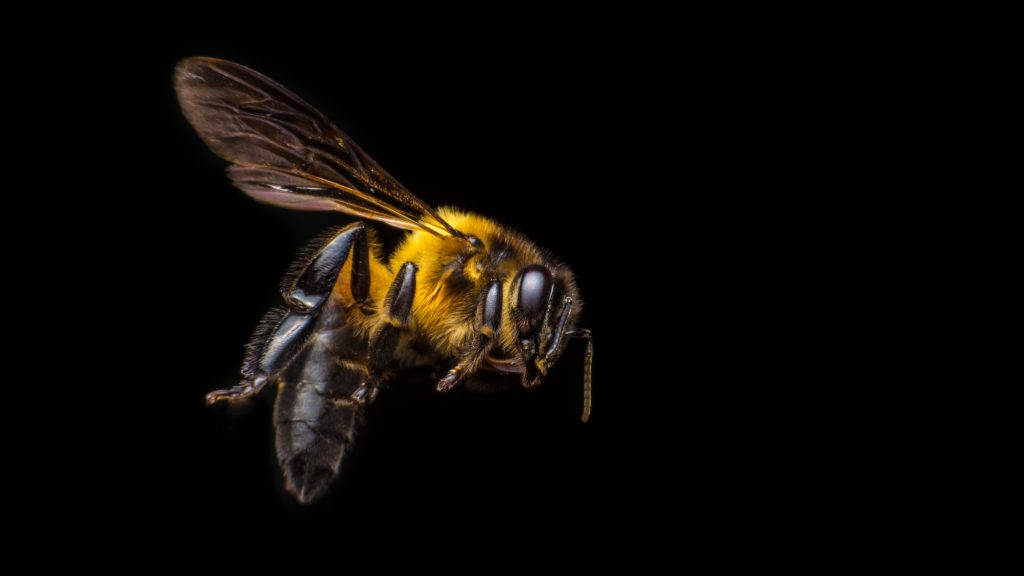What Can Swarm Theory Teach Project Managers?

Some 2.3 million people are needed annually to fill all the project management-oriented positions expected by 2030, according to a recent report by the Project Management Institute. Whilst individuals can spend time trying to learn project management methodologies or governance frameworks, there’s another unexpected source that offers wisdom into organising, operating, and governing projects effectively: swarm theory.
Swarm theory, derived from research into the collective behaviour of self-organising, decentralised agents in nature, provides valuable insights for project managers. It is an organising theory that has been subject to increasing research in recent decades, with well-known global brands now buying into the idea. There are three key learnings from swarm theory in the animal kingdom that can be applied in project management.
Communication through structure
Bees have long been a source of inspiration for humans – take, for example, architects copying the strong, lightweight design of beehives in office buildings.
But at its core, bees’ ability to make rapid, coordinated decisions and build innovative structures stems from how they operate: they act as quasi-governments with strict chains of command and elaborate internal rules. This structure enables bees to communicate effectively, as they have a clear hierarchy, with a queen, drones, and worker bees.
Project managers can draw parallels between this and the world of work. There are numerous benefits in establishing a clear chain of command and a well-defined hierarchy within teams.
This includes reducing ambiguity, improving accountability and performance, and enhancing cooperation. The structure that bees operate within is a good example of how to promote coordinated action whilst avoiding conflict.
To successfully implement these strategies in a project, managers should begin by establishing clear roles and responsibilities for each team member, ensuring that authority and reporting lines are well-defined.
It is important to craft a comprehensive communication plan outlining channels, frequency, and preferred formats for effective collaboration and updates. Project management tools can also be leveraged to enhance organisation and tracking, facilitating smoother workflow and task management.
Ultimately, this approach can help managers optimise team efficiency and drive project success, with research suggesting that well-defined responsibilities can increase team efficiency by over 50%.
Trust your members
Another key lesson drawn from swarm theory is the importance of trust within a team. Killer whale (orca) pods demonstrate remarkable effectiveness when hunting seals, relying on mutual trust among members. Seals perched on ice blocks are swiftly dislodged by orcas swimming in synchronised motion, generating a wave that carries the seals into the water where other pod members lie in wait.
Studies have shown that this cooperative hunting behaviour makes them extremely effective. Every orca in the pod trusts its counterparts to assist and align with the common goal, enabling seamless cooperation.
In a similar fashion, project managers should learn to build trust within teams by being transparent, honest, and reliable. The benefits of this include increased engagement and motivation, improved collaboration and innovation, and reduced conflict and stress.
To achieve this, managers would do well to prioritise clear and frequent communication, ensuring that the team remains informed about project status, goals, and expectations. It’s vital to uphold integrity and competence by consistently following through on commitments and delivering high-quality outcomes.
Moreover, demonstrating empathy and appreciation – by acknowledging and understanding the needs of team members, recognising their efforts, and expressing gratitude for contributions – goes far in project management. Through embodying these values and practices, managers can foster a positive and productive project environment conducive to achieving desired outcomes and maintaining team morale.
Have a clear purpose
A third key lesson to take from swarm theory is aptly demonstrated in ant colonies. Ant colonies exemplify purpose through their efficient method of sourcing food: scout ants find food and communicate its location back to the nest, leaving a pheromone scent trail that enables other ants to find the shortest path to the food source.
Major US airline Southwest Airlines made headlines several years ago when it looked at ant-foraging methods to find more efficient routes of managing its airplane cargo.
Likewise, project managers would do well to ensure teams are united behind a clear purpose and learn from one another, by setting objectives and conveying how each person contributes to overall project success. To implement this, start by defining the project scope and deliverables, ensuring that they are realistic, measurable, and achievable within the resources and timeframe.
Consistently communicate the project’s vision and mission to all stakeholders, underscoring its significance and anticipated benefits. It is also important to engage team members and stakeholders actively throughout the planning and execution phases, leveraging others’ expertise and insights to refine strategies, mitigate risks, and enhance overall project outcomes, just as ants do with foraging methods.
In doing so, managers can establish a solid foundation for project success. Benefits include increased alignment and commitment, improved focus and efficiency, and enhanced satisfaction and fulfilment.
Overcoming challenges
However, while swarm theory clearly offers significant advantages, it’s necessary to exercise caution and awareness of potential drawbacks. Take, for example, consensus within the group.
Reaching consensus can enhance cohesion and cooperation – but managers should remain vigilant if it lacks robust challenge and review mechanisms. Without such scrutiny, decisions may lack depth or overlook critical factors, undermining the project’s overall effectiveness and success.
As such, it’s essential for project managers to foster an environment where diverse perspectives and constructive criticism are welcomed to ensure the integrity and rigor of decision-making processes.
Another potential challenge is the emergence of conflicts – particularly as projects grow more complex. Some stakeholders may experience waning interest or patience in projects, leading to tensions or disputes.
Project managers must proactively address and resolve conflicts in a peaceful, constructive manner, striving to understand the underlying concerns and interests of all parties.
By promoting open communication channels and meaningful dialogue, project managers can mitigate the risk of conflicts escalating and work towards consensus-building strategies that maintain stakeholder engagement and commitment throughout the project lifecycle.
Swarm theory offers project managers invaluable insights into improving communication, building trust, and defining purpose. Like structured beehives, clear hierarchies, and roles benefit team performance.
Trust, as seen in orca pods, fosters seamless cooperation. And clear purpose, as demonstrated in the efficiency of ant colonies, offers an opportunity to improve team alignment.
Dr David Jones is a project management expert at PA Consulting





